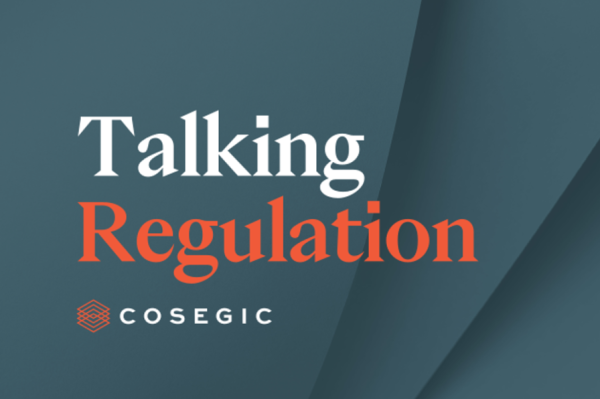In January 2024, the FCA (‘the Regulator’) sample tested 23 payment firms (‘firms’) to assess the sector’s response to Consumer Duty (‘the Duty’) implementation and specific risks communicated in its Dear CEO Letter of 21 February 2023. The regulator published its sector observations in its multi-firm review findings (‘review’) on 9 October 2024.
In this article we will reflect on the FCA’s findings of good and poor practice and consider what firms offering payment services could do to keep the FCA (and the firm’s customers) satisfied.
General findings
The FCA confirmed that just over half of the 23 payment firms conducted Duty implementation to satisfactory levels. Of these firms, it was viewed that good consumer outcomes were likely to be achieved if minor actions were addressed appropriately. However, under half of the firms were found to not have fulfilled Duty requirements that presented either moderate or high-risk deliverables of poor consumer outcomes.
We have broken down the core areas of the review below, summarising the FCA’s key observations and offer advice on what firms can do to meet the Regulators expectations.
Products and Services – Prioritise agents
The FCA centred its attentions on the payment sector’s target market and agent oversight in their product and service delivery under the Duty.
The regulator’s observations provided its views on:
- Target markets as widely set in the payment sector, were generally not problematic for low-risk product offerings. Though, it was perceived that broad and vaguely-defined target markets could increase the likelihood of consumer harm and affect the suitability of the product. Logically, high and medium-risk products were advised to be offered to smaller and more distinct target markets as a more risk-aligned approach to selling.
- Compliance monitoring plans were seen to be poorly implemented as firms had not updated their agent oversight processes and training, to meet policy and Duty requirements. Perhaps unsurprisingly, agent controls testing by principal firms was not ‘on par’ with regulatory expectations, particularly with agent disclosures, customer communications and support services.
Solutions: Firms should get to ‘know their customers’ (‘KYC’) - quite literally, and far beyond the anti-money laundering and financial crime requirements for KYC. Principal firms should revamp agent oversight practices by conducting refresher monitoring to re-familiarise themselves with each agent, as if they are a ‘customer’. Furthermore, firms should ensure contractual arrangements and processes with agents and distributors provide sufficient information to enable the firm to assess outcomes, continually.
Fair Value – Better justification
The FCA expressed price and value to be a problematic area of the Duty’s implementation, in its fair value assessment publication on 18 September 2024 (updated on 23 October 2024). The findings suggested some firms had taken a mechanical approach to fair value by completing assessments to serve its purpose, but not upholding whether fair value is provided for their products and services.
The FCA viewed that:
- Insufficient justification was provided by firms in explaining their pricing/fees vs. benefits received by customers. Reviewing the benchmarking of prices alone was not enough to assess fair value, as it neglected the wider impact of costs and benefits to consumers. Firms fairly argued that the nature of payment products warranted flexible pricing, influenced by competitors’ rates. This is expected in payment services which tends to operate in a fast-paced and saturated FX market.
- Unfair pricing to different target groups was carried out by firms offering products with a variety of charges without thinking about the impact to the existing product service users. Diligent firms in the review had satisfactorily demonstrated cost-benefit analysis in varied target consumer groups and provided granularity on the factors determining if pricing is reasonable, or not.
Solutions: Firms must connect the implications of pricing with the other Duty outcomes, such as consumer support for those who could struggle with affordability. Firms should be more conscientious in their approach, using customer surveys and other similar metrics to understand different target market needs to help drive pricing. Firms must apply the data in their fair value assessments to explore if current pricing correlates with customer benefits proportionally.
Consumer Understanding – Improve testing
Comparatively (to fair value), it appears that the consumer understanding leg of the Duty produced slightly more favourable outcomes, where the best performing firms were seen to:
- Tailor communications to retail customers together with the complexity of the product and the communication channel used. Testing went beyond simplistic reviews of text (e.g. websites materials and terms) as they evidenced the broader context of consumer understanding in their testing plans and connected with other Duty outcomes such as consumer support.
- Demonstrate good design effectiveness in their testing methodologies (e.g. A/B testing) which enabled firms to make useful comparisons of specific wording in various communications about their products and services. Some firms went to great lengths by examining the average length of sentences and syllables per word, to review the readability of their communications.
- Produce a good range of Management Information (MI) from regular testing of consumer understanding which provided their senior management with a level of comfort that it was being properly delivered. However, it was found that MI outputs for customer feedback were limiting and variable in its measurement of customer understanding e.g. email open rates or net promoter scores. The findings hinted strongly that firms need to identify other appropriate key performance indicators to present testing results .
The Regulator however, expressed concerns with some review findings where:
- Firms relied on existing procedures by first and second line of defence only, rather than testing communications before and after being sent to customers.
- Infrequent testing prevented regular monitoring of customer communications to help their target audience with product and service choices, which produced less data outputs to truly gauge if good customer outcomes were being received.
Solutions: Conduct ‘before vs. after’ assessments of the impact of communications and its influence on good customer decision-making. Firms should re-evaluate their monitoring and testing plans to see if testing objectives are designed to produce measurable results that appropriately assess the consumer understanding outcome.
Consumer Support – Strengthen channels
The FCA expects compliance practices to go deeper and demonstrate an extra level of care, particularly in areas of current regulatory interest i.e. vulnerable customers and fraud.
Firms were:
- Offering insufficient channels and support to customers with vulnerabilities. Additional support by way of clearly signposting support to third party organisations could not be demonstrated to meet customers’ needs.
- Not communicating appropriately to customers on their reasons for restricting account access in financial crime matters (without ‘tipping off’ the customer in suspicious activity terms).
- Not using MI on complaints relating to customer support effectively to correct procedural risks, implying that firms are not giving this area sufficient attention, or that they needed more support.
Solutions: It seems that most of the consumer support issues could be resolved through appropriate re-training. This would ensure that staff attain a fundamental understanding of consumer support, its outputs and implement the right solutions to improve shortfalls. Practically, firms’ service level agreements provide vital indications on the quality of customer support delivered by relevant stakeholders.
Governance – Increase scrutiny
Most firms demonstrated the Duty’s implementation in their board packs, indicating that the requirements were being taken quite seriously. Good examples meant that concise MI packs were provided to the Board, including appropriate remediation of gaps in delivering good consumer outcomes in other parts of the payment chain i.e. services via agents and distributors. However, in terms of gaps, the Regulator identified:
- Common challenges of inadequate Duty implementation by the Consumer Duty Champion and Committee members, implying that they are not exercising their functions in the matter.
- Firms not providing the right narrative in some meeting minutes on appropriate corrective actions and detail on improved outcomes.
- Firms not properly considering the impact of the Duty on remuneration and incentivisation policies on consumer harm, implying mis-selling and disoriented bonus and award structures by firms.
The FCA’s finding is a possible call-out to the risk of firms cultivating poor culture, but without overtly stating it in the review. Its suggestive of the pitfalls of measuring conduct risk, where observations are held to probability rather than actuality.
Solutions: Consumer Duty governance practices must be visibly improved and senior management accountability must always be exhibited. Ensuring complete and thorough mitigation plans are provided to Boards is a good starting point.
Management Information – Lacks clarity
Some positive findings related to firms demonstrating good control design of their MI frameworks by RAG rating their actions and identifying shortcomings; Remediation actions were assigned with action owners and target completion dates – which were questioned to ensure standards were raised. However, it was found that:
- Too many metrics were being collated which were unmanageable over long term and difficult to re-align with Duty objectives.
- Firms were not modifying their pre-Duty MI frameworks, which prevented some Duty shortfalls from being identified.
- Firms were not linking the identified metrics to the four Duty outcomes or cross-cutting rules, making it harder to identify poor outcomes, and even good results.
The review certainly suggested some level of confusion amongst the industry as to what robust Duty MI frameworks services should look like, so a steer from the FCA would benefit all.
Solutions: The key objective remains for each business model in using MI, which is to ‘assess, test, understand and evidence customer outcomes’. Firms should utilise both current data from, say, compliance monitoring plans and collate new data (e.g. new KRIs) to measure Duty implementation. Firms should think about what data can be used, how it links to the core purpose and how it achieves the right reporting results.
Next steps
The Regulator’s review provides firms with an opportunity to reconsider and adjust their frameworks to align with the FCA’s expectations of the Duty; it certainly intends to continue overseeing if firms are meeting the Duty’s requirements competently.
Firms should commit to regulatory preparedness for the Duty by showing continual monitoring and improvement. Firms should not simply aim at meeting basic Duty expectations and transition to diving in at the "deep end" for more meaningful analysis and reform.
If you’d like to discuss your current Duty implementation or require support, please get in touch or download our Consumer Duty brochure below.
Download Consumer Duty Brochure
Related resources
All resources
Dealing with bereaved customers and those with powers of attorney - key observations from the FCA’s Multi-Firm Review

Talking regulation: Do you have the Operational Resilience mindset?

Consumer Duty Board Report 2025: Tips, Templates & Resources

Ensuring fair treatment: Vulnerable Customers and the Vulnerability Registration Service

